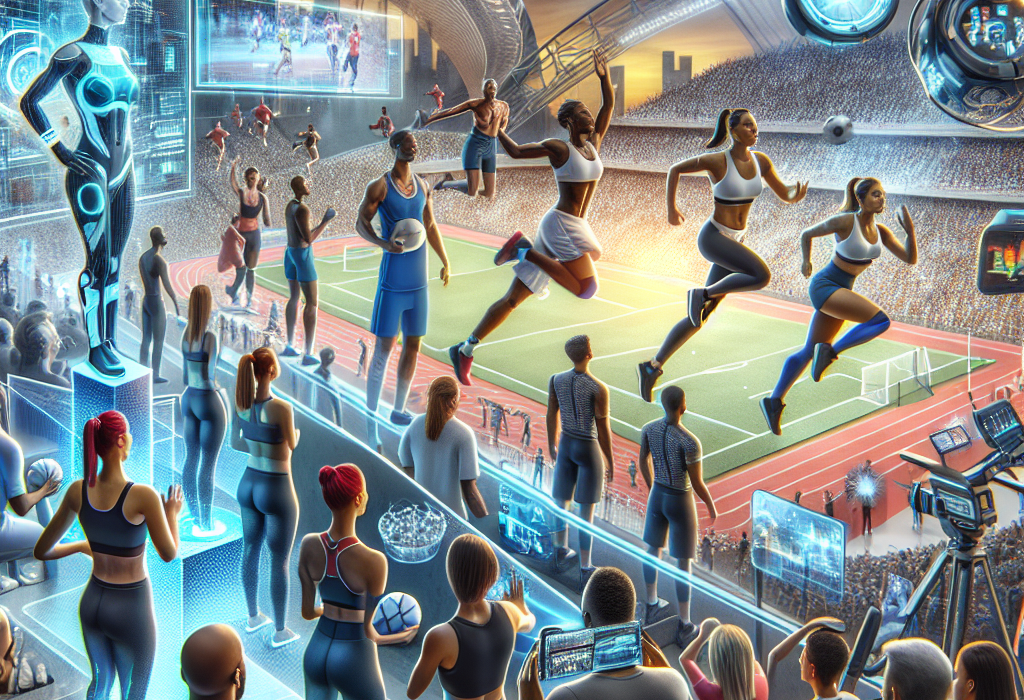The Future of Sports: Trends and Technologies Shaping the Industry
The world of sports has always been a dynamic and ever-evolving landscape. The last few decades have witnessed remarkable changes driven by technology, globalization, and shifting cultural attitudes. As we look towards the future, these forces will continue to shape the industry in profound ways, driving innovation and altering how we play, watch, and engage with sports.
The Rise of Wearable Technology
One of the most significant developments in recent years has been the advent of wearable technology. Devices such as smartwatches, fitness trackers, and biometric clothing have revolutionized how athletes train and monitor their performance. These gadgets provide real-time data on heart rates, muscle activity, and overall physical condition, enabling athletes and coaches to make more informed decisions.
In the future, we can expect further integration of advanced sensors and artificial intelligence (AI) to enhance performance analytics. Imagine a shirt that can monitor an athlete’s hydration levels and recommend fluid intake or shoes that can detect imbalances in gait that may lead to injury. The possibilities are endless and could be pivotal in the quest to push human performance to new heights.
AI and Big Data in Sports Analytics
AI and big data are transforming the sports industry, providing unprecedented insights into player performance, strategy development, and fan engagement. Coaches and analysts now have access to vast amounts of data that can be processed and analyzed to gain a competitive edge.
Imagine AI algorithms breaking down the efficiency of a basketball player’s shot from various positions on the court or analyzing the stamina of a soccer player throughout a season. These insights allow for personalized training programs and strategic adjustments that can make all the difference in high-stakes competitions.
Moreover, AI is enhancing the fan experience by providing personalized content and recommendations, making it easier for fans to follow their favorite teams and players. Data-driven insights are also being used to optimize ticket sales, venue management, and even concession stand operations, making the entire sports event experience more enjoyable and efficient.
Virtual and Augmented Reality
Virtual Reality (VR) and Augmented Reality (AR) are poised to redefine how we experience sports. VR has found applications in athlete training, offering immersive simulations that enable practice scenarios that would be impossible or impractical in the real world. Football quarterbacks can practice reading defenses in a risk-free environment, and race car drivers can learn new tracks without leaving their homes.
For fans, AR promises to transform the viewing experience, either at home or in the stadium. Imagine sitting in a stadium seat and using AR glasses to see player stats, instant replays, and other enhanced content overlaying the live action. For at-home viewers, VR could offer the best seat in the house, providing a courtside or sideline experience from the comfort of the living room.
Esports: A Growing Phenomenon
Esports, or competitive video gaming, has exploded in popularity over the past decade and shows no signs of slowing down. Major tournaments now rival traditional sports events in terms of viewership and prize money. The rise of esports has opened up new revenue streams, including sponsorships, media rights, and merchandise.
Universities and colleges are starting to offer esports scholarships, and professional teams are building dedicated facilities for training and competition. As technology continues to improve, we can expect the line between physical and digital sports to blur, creating a hybrid sports culture that embraces both traditional and electronic forms of competition.
Sustainable and Smart Stadiums
As sustainability becomes an increasingly important global issue, sports venues are evolving to meet these new standards. New stadiums are being designed to be environmentally friendly, incorporating renewable energy sources, water conservation measures, and sustainable materials.
In addition, these venues are becoming "smart stadiums" equipped with advanced technologies to enhance the fan experience. From seamless entry and exit using biometric identification to personalized content on interactive displays, the stadium of the future will be a technologically integrated environment that offers unparalleled convenience and entertainment.
Conclusion
The future of sports promises to be an exciting blend of tradition and innovation, driven by technological advancements and changing societal norms. Wearable technology, AI, VR/AR, the rise of esports, and the development of sustainable and smart stadiums are just a few of the trends that will shape the industry in the coming years.
As these changes unfold, they will not only redefine how sports are played and enjoyed but also create new opportunities and challenges. Stakeholders in the sports industry—athletes, coaches, administrators, and fans—must embrace these advancements to fully realize the potential of this thrilling new era in sports.
















Leave feedback about this
You must be logged in to post a comment.